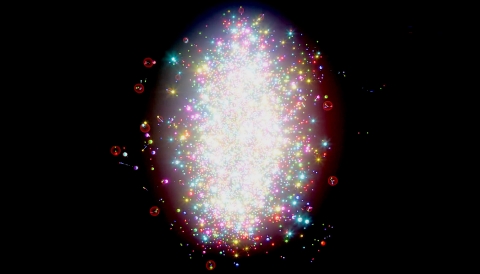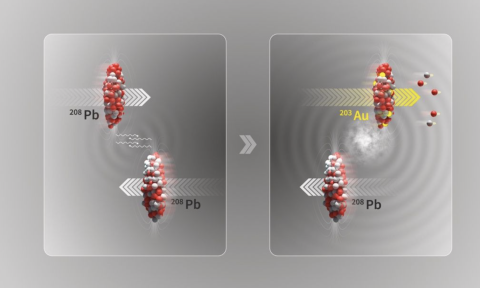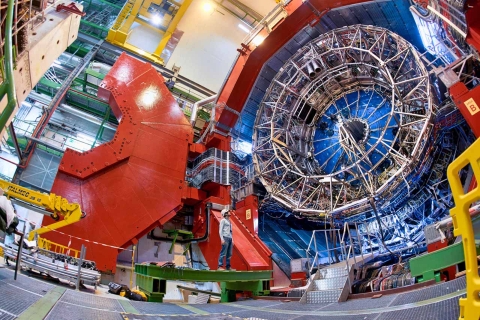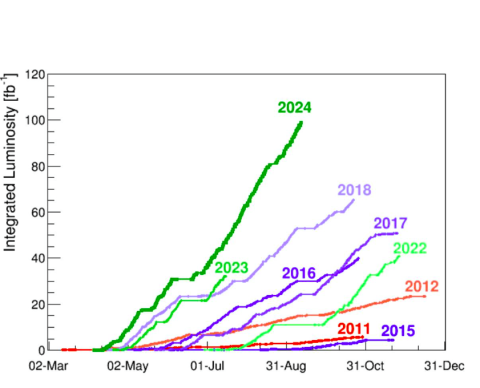ALICE
FoCal Moves Toward Construction After a Successful Beam Test
Introduction Our recent beam test campaign for the ALICE Forward Calorimeter (FoCal) marked an important turning point for the project. After years of development toward a highly granular forward calorimeter, FoCal has now demonstrated the…
Read moreHighlights from the 2nd NGT Technical Workshop
Participants of the 2nd Next Generation Triggers Technical Workshop at the Globe of Science and Innovation. Picture: Mariana Velho From 19 to 21 November 2025, the Next Generation Triggers (NGT) project held its 2nd Technical Workshop at CERN’s…
Read moreLight ions at the LHC: first results from oxygen–oxygen and neon–neon collisions
This summer, the Large Hadron Collider (LHC) delivered its first-ever collisions between light ions, opening a new chapter in the study of nuclear structure and the quark–gluon plasma (QGP) – the extreme state of matter that existed in the first…
Read moreAerogel RICH detector for the future ALICE 3 PID system at LHC
For the LHC Runs 5, starting in 2036, the ALICE collaboration is proposing a new apparatus, ALICE 3 (CDS record), to further investigate the properties of Quark–Gluon Plasma (QGP) following the physics measurement campaign of LHC Runs…
Read moreALICE explores the quark–gluon plasma with light-ion collisions
In July 2025, the ALICE experiment took part in the LHC’s first-ever light-ion campaign, colliding oxygen–oxygen (O–O) and neon–neon (Ne–Ne) nuclei at a centre-of-mass energy of 5.36 TeV per nucleon pair. The short but intense runs offered a…
Read moreHeavy isotopes production via electromagnetic interactions at the LHC
The ALICE experiment at LHC studies ultra-relativistic heavy-ion collisions to characterize the Quark-Gluon Plasma (QGP) — a state of matter where quarks and gluons are deconfined. This state existed briefly in the early Universe, just a few…
Read moreIsolated photon measurements in Pb–Pb collisions with ALICE
Heavy-ion collisions (AA) at ultrarelativistic energies at the RHIC and LHC have produced during the last 25 and 15 years, respectively, an extremely hot and dense environment, a strongly interacting coloured medium named “quark-gluon plasma” (QGP…
Read moreUnveiling the Early Universe: The Historical Journey to Discovering the Quark-Gluon Plasma
One of the most fascinating characteristics of particles carrying colour charge, such as quarks and gluons, is their inability to exist as free entities in nature. They are indeed perpetually confined within colour-neutral composite particles known…
Read moreLHC Run 3: A Marathon of Progress and Perseverance
Earlier this month, the Large Hadron Collider reached an unprecedented milestone of 100 inverse femtobarns – equivalent to 10 million billion collisions – delivered to the ATLAS and CMS experiments in 2024, with 28 days of proton-proton collisions…
Read moreFrom Upgrade to Upsurge: ALICE Experiment Achieves Milestone Luminosity in Run 3
The ALICE experiment has successfully resumed physics data-taking in RUN 3 following a major upgrade of its detectors and data acquisition system during the LHC Long Shutdown 2 (LS2). While a portion of the delivered luminosity in 2022 was allocated…
Read more









